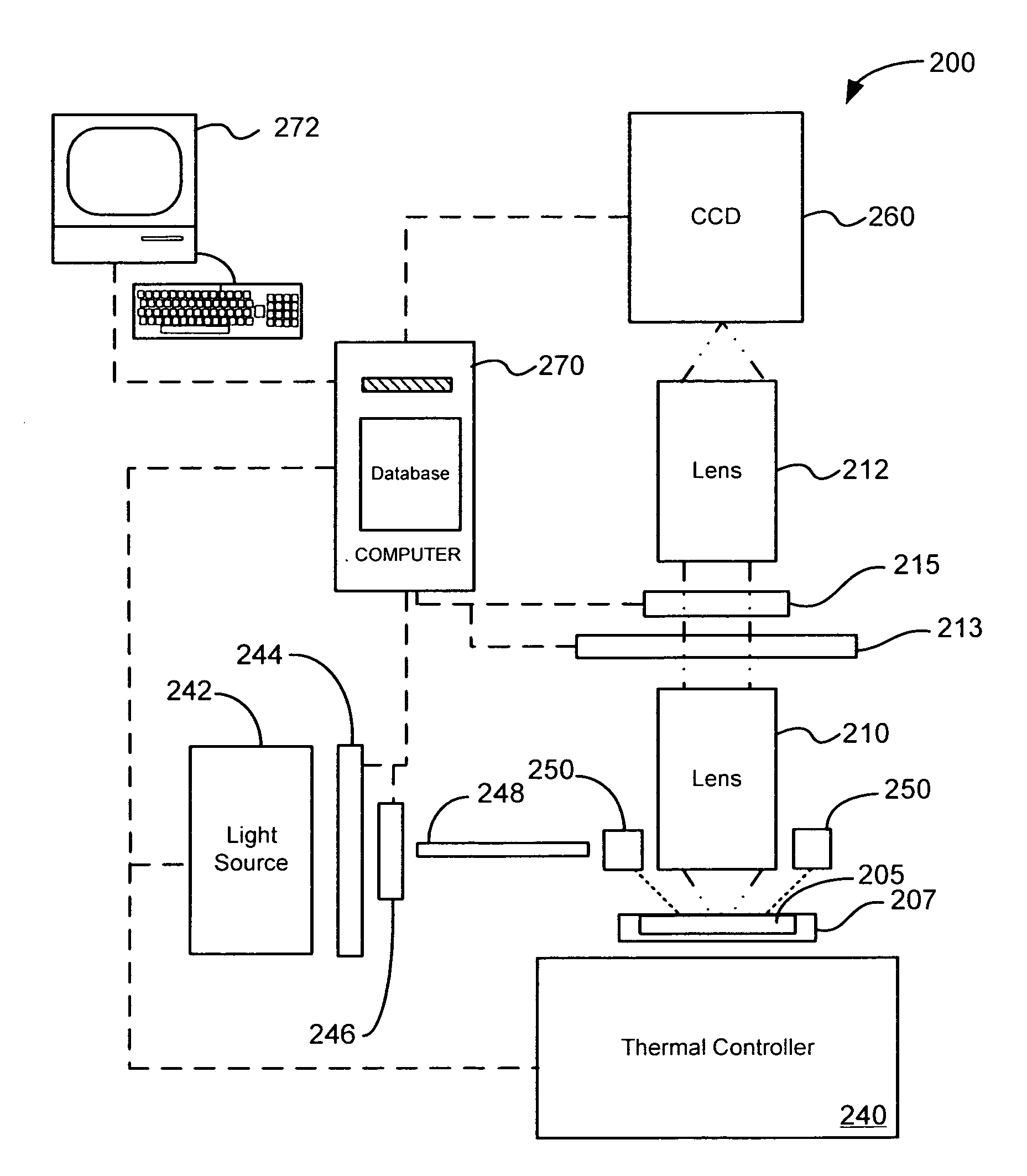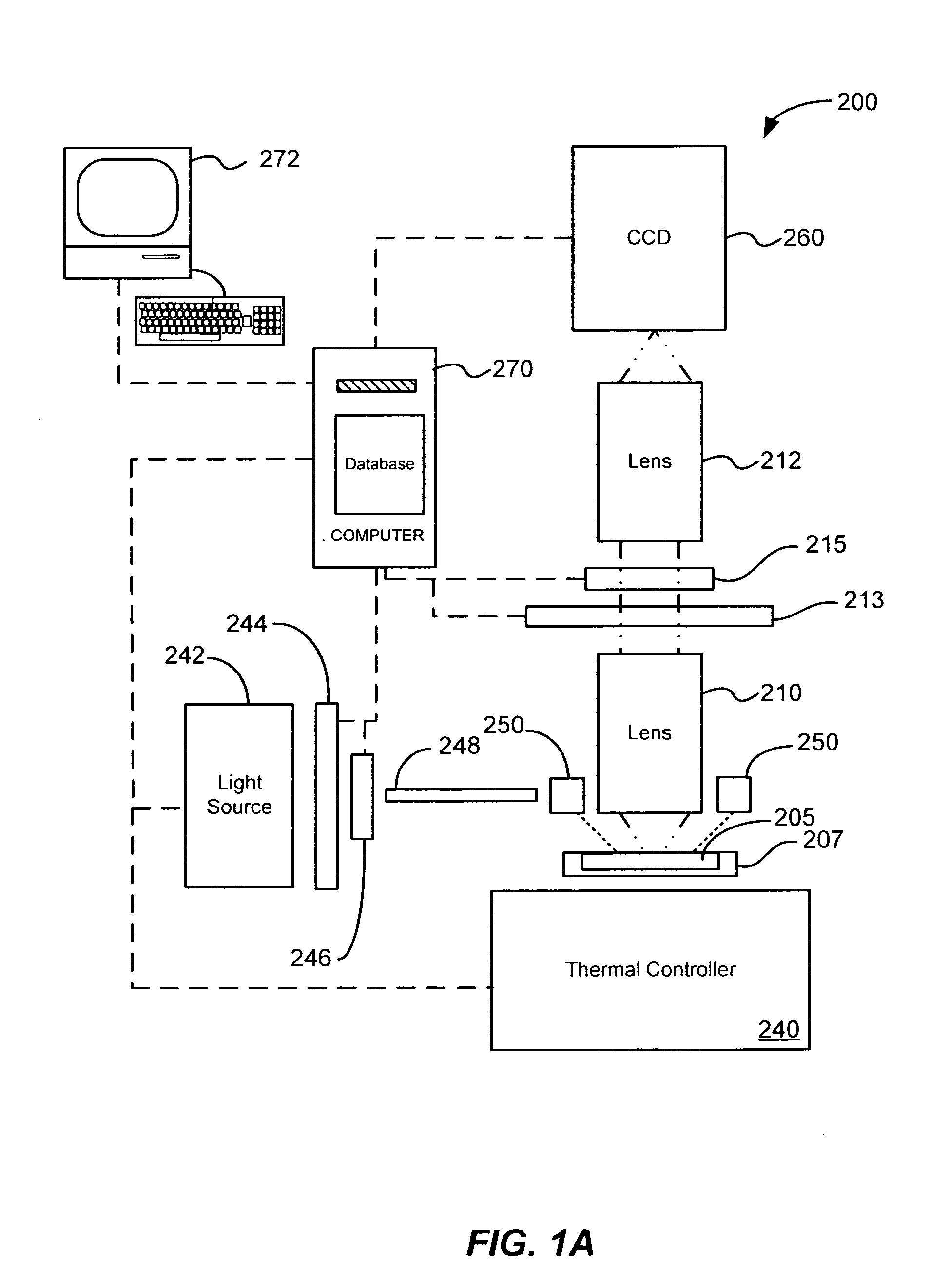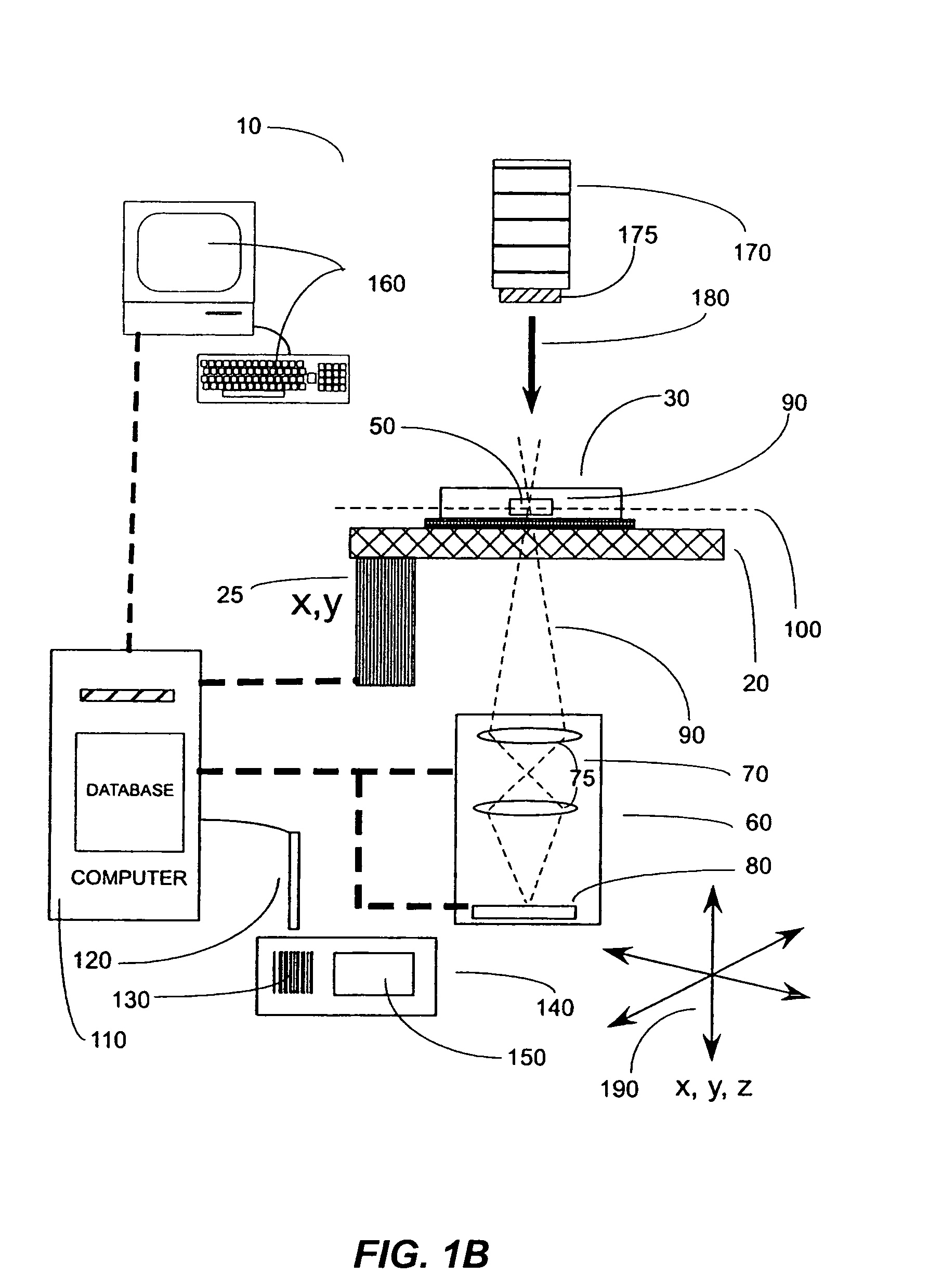Optical lens system and method for microfluidic devices
a microfluidic device and optical lens technology, applied in the field of microfluidic techniques, can solve the problems of inability to meet the performance goals of conventional scanning and stitching systems, cumbersome and less efficient operators, and other operator errors and limitations, and achieve the effects of reducing or eliminating synchronization problems, high nas, and large field of view
- Summary
- Abstract
- Description
- Claims
- Application Information
AI Technical Summary
Benefits of technology
Problems solved by technology
Method used
Image
Examples
Embodiment Construction
[0056] According to the present invention, techniques for microfluidic systems are provided. In particular, the invention provides a method and system for imaging one or more entities suspended in a volume of fluid in a chamber of a microfluidic device. More particularly, the present method and system for imaging uses indications from a fluorescence signal associated with the one or more entities in the microfluidic device. Merely by way of example, the techniques for microfluidic methods and systems are applied using fluorescent, chemiluminescent, and bioluminescent readers coupled to the microfluidic device, but it would be recognized that the invention has a much broader range of applicability.
[0057] In the present application, references are made to certain types of “reaction” chambers in a microfluidic device. In general, these “reaction chambers” include processing sites, processing chambers, and / or reaction sites, any combination of these, and the like. These chambers may be...
PUM
| Property | Measurement | Unit |
|---|---|---|
| time | aaaaa | aaaaa |
| time | aaaaa | aaaaa |
| time | aaaaa | aaaaa |
Abstract
Description
Claims
Application Information
 Login to View More
Login to View More - R&D
- Intellectual Property
- Life Sciences
- Materials
- Tech Scout
- Unparalleled Data Quality
- Higher Quality Content
- 60% Fewer Hallucinations
Browse by: Latest US Patents, China's latest patents, Technical Efficacy Thesaurus, Application Domain, Technology Topic, Popular Technical Reports.
© 2025 PatSnap. All rights reserved.Legal|Privacy policy|Modern Slavery Act Transparency Statement|Sitemap|About US| Contact US: help@patsnap.com



